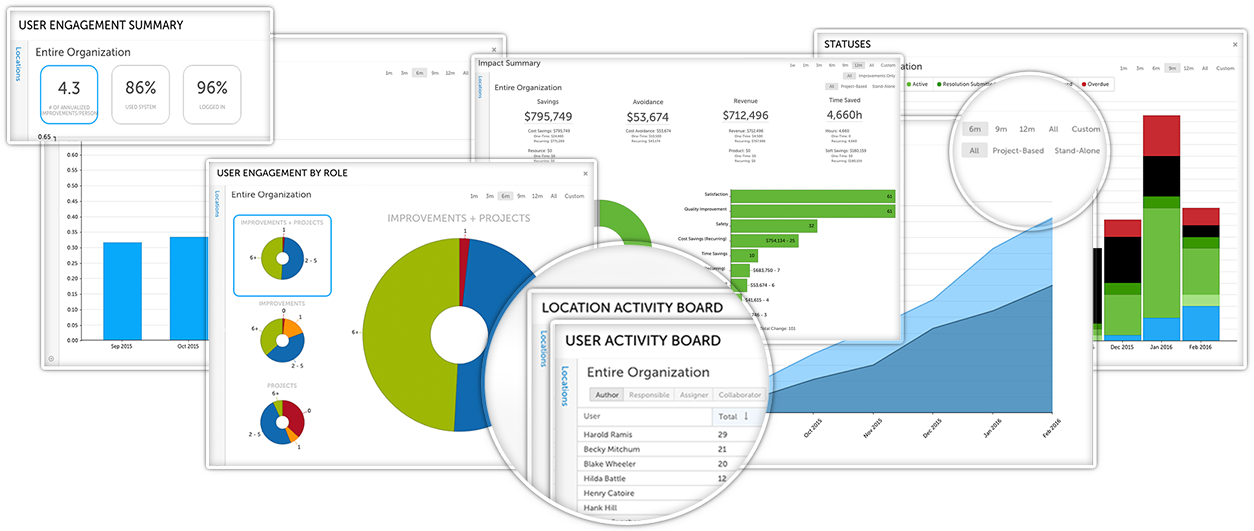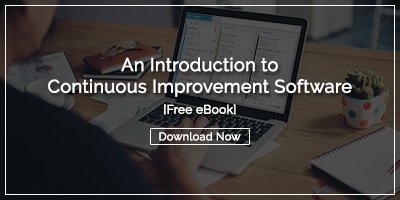 If your organization has decided to implement software to support its continuous quality improvement initiatives, congratulations. That's a smart move. However, it's also a bit risky. There are a lot of options available, some more suited for the task than others. It isn't uncommon for an organization to get far down the path with a vendor only to learn that the solutions won't be a success. Don't let that happen to you. We hope you'll consider KaiNexus, but even if you don't, these tips will help ensure that you get a solution and a vendor partnership that will help you get the most out of continuous quality improvement.
If your organization has decided to implement software to support its continuous quality improvement initiatives, congratulations. That's a smart move. However, it's also a bit risky. There are a lot of options available, some more suited for the task than others. It isn't uncommon for an organization to get far down the path with a vendor only to learn that the solutions won't be a success. Don't let that happen to you. We hope you'll consider KaiNexus, but even if you don't, these tips will help ensure that you get a solution and a vendor partnership that will help you get the most out of continuous quality improvement.
Choose an Application Built for Improvement
Continuous quality improvement involves a series of small projects to reduce waste, eliminate defects, and make sure that every process is efficient. So it makes sense that some people turn to project management software to support the effort. The problem is that those solutions are very generic so they can be used for almost anything. They aren't explicitly designed for improvement work and lack many of the critical features necessary for success. They may have basic workflow, but solutions built with quality improvement in mind also give you:
Configurable dashboards – Every role has different responsibilities in terms of improvement, so each person must be able to organize the work in a way that makes sense for them. Leaders may need multiple dashboards to track the health of improvement work across the organization.
Engagement and activity reporting – Because quality improvement is everyone's job, it should be easy to see which people, teams, and departments are most engaged in improvement work and which activities are going on at any given time.
Impact reporting – This is where project management solutions typically fail. The technology you use to support improvement should be able to calculate the impact of the changes you make in both the short and long-term. The results might be financial or related to other metrics such as customer satisfaction or delivery time, but whatever they are, measurement is key.

Consider Implementation & Training Services
Deploying new software and getting people to use it is always a challenge. That's why you want to pick a partner that has a well-defined implementation plan for new customers. The vendor should care about your approach to quality improvement and listen carefully to your unique needs and goals. The best vendors offer customized training services that include on-demand videos, on-line sessions, on-site options, and certification modules.
Assess the Vendor's Ability to Be a Continuous Improvement Resource
There is no one way to engage in continuous quality improvement. There are dozens of tools and techniques that you can try. The software you choose should support things like Gemba walks, Kanban, Hoshin Kanri, and huddle boards. In addition, the vendor should be an excellent resource for learning more about them. Does the vendor have a useful blog? Do they hold informative webinars? Are they considered thought leaders?
Ask About Success Beyond Implementation
Most software vendors offer technical support, but what about advice on how to use the product features in your specific environment? It pays to find a partner that has a team dedicated to proactively managing your account and helping you get the most out of the solution even when nothing is broken.
Don't Ignore the Technical Considerations
Buying software in 2019 is much easier than its ever been. Most vendors host their solution in the cloud so you don't have to worry about hardware or maintenance. But that doesn't mean there are no technical things to ask about. The security of your data is paramount, so look for a solution that has data encryption at rest and in transit and insist on 3rd party annual penetration testing. Of course, you'll want to make sure it has mobile apps for iOS and Android. If single sign on is important for your organization, ask about that as well.
If you find a solution that covers all of these bases, you can move forward with confidence that your implementation will be a success.




Add a Comment